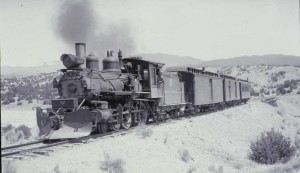
For over 56 years, the 169 was a workhorse on the Denver and Rio Grande narrow gauge railroad, along trails long traveled by Native Americans and pioneers. She pulled everything from freight to the two most famous named trains of the narrow gauge: the San Juan and the Shavano.
Built in 1883 at Baldwin Locomotive Works in Philadelphia, the 169 seemed to have nine lives. She survived three wrecks, the last one in 1922, when Locomotive 411, running light, tried to beat the 169 into Sublett, NM, and hit her head on. Both engines suffered extensive front-end damage, and the 411 was scrapped. But the D&RG management decided the 169 was worth saving and gave her a second chance with an extensive rebuild.
Once back in service, the 169 continued to serve for many years on the Chili line, from Antonito to Santa Fe, NM. Even when newer, heavier locomotives were put into service on the Chili line, the old reliable 169 was often called upon to stand in when a K-28 was out of service.
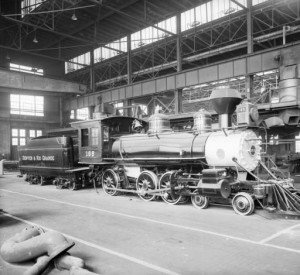 In 1939, the 169 was given a facelift and sent to the World’s Fair in New York. There, she delighted hundreds of thousands of children of all ages, as part of a display of American Railroad history. After that presentation, she toured the Denver and Rio Grande Western railroad to “show off” the railroad’s history. The D&RGW donated the faithful locomotive to the City of Alamosa in 1947 for public display. That could have been the end of her story, had it not been for a dedicated group of railroad enthusiasts, determined to give the little engine that could a new lease on life. Their dream was to see the 169 in action once again, as a fully functioning locomotive.
In 1939, the 169 was given a facelift and sent to the World’s Fair in New York. There, she delighted hundreds of thousands of children of all ages, as part of a display of American Railroad history. After that presentation, she toured the Denver and Rio Grande Western railroad to “show off” the railroad’s history. The D&RGW donated the faithful locomotive to the City of Alamosa in 1947 for public display. That could have been the end of her story, had it not been for a dedicated group of railroad enthusiasts, determined to give the little engine that could a new lease on life. Their dream was to see the 169 in action once again, as a fully functioning locomotive.
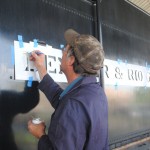
“In fact, the 169 is in very good shape,” says Charles Proudfoot, president of the Friends of the 169. “Of all the surviving locomotives of the early Colorado narrow gauge, the 169 might be in the best and most complete condition. She is an outstanding candidate for restoration to fully operational service.”
Starting the restoration with a grant from the Colorado State Historical Fund and the generosity of private donors, the Friends of the 169 have worked tirelessly to bring the old locomotive back to life. She now has a roof over her head in Cole Park, Alamosa.
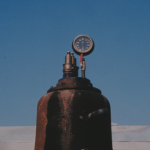
“We have completely restored the tender, and hydro-tested the boiler, which led to a recalculated Form 4 boiler inspection, showing that the boiler can be operated at full capacity,” says Proudfoot. Inspection also shows that the 1924 casting of the steam chest is fully operational.
The Friends’ goal is to use as much of the original locomotive as possible for a historically accurate restoration. All work to date has been in a sequence to provide the most economy of effort in achieving full operation at the original boiler pressure.
Current planning calls for continued evaluation and restoration of other systems, for example, the frame, running gear, and suspension. The group is currently raising funds to achieve the next milestone – full restoration of the boiler, which is estimated to cost approximately $150,000.
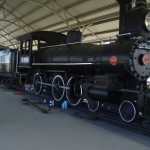
The Friends of the 169, a 501(c)3 nonprofit organization, welcomes railroad enthusiasts who want to help bring this rare early icon of the Narrow Gauge rails back to life. For more information, call Charles Proudfoot at (866) 970-3540.